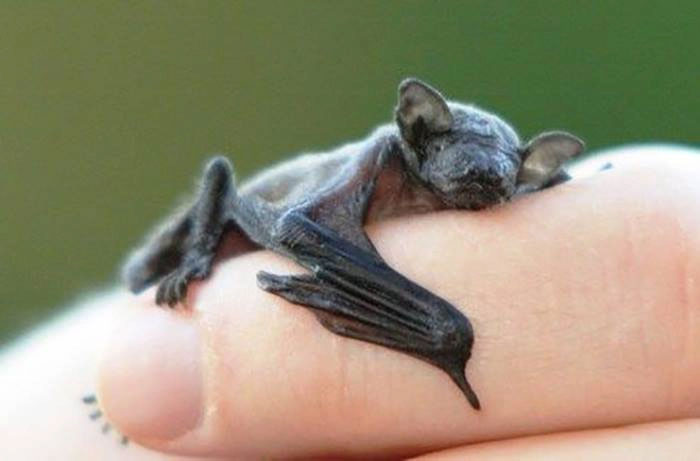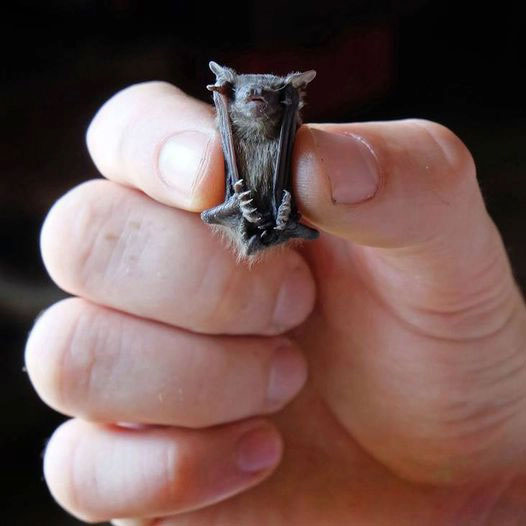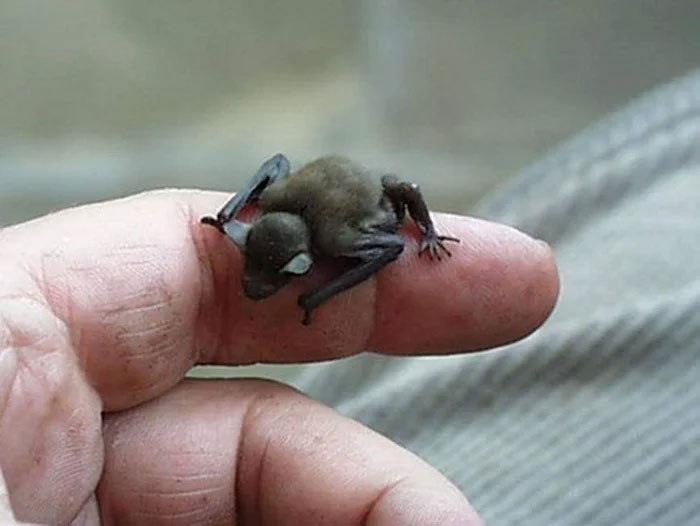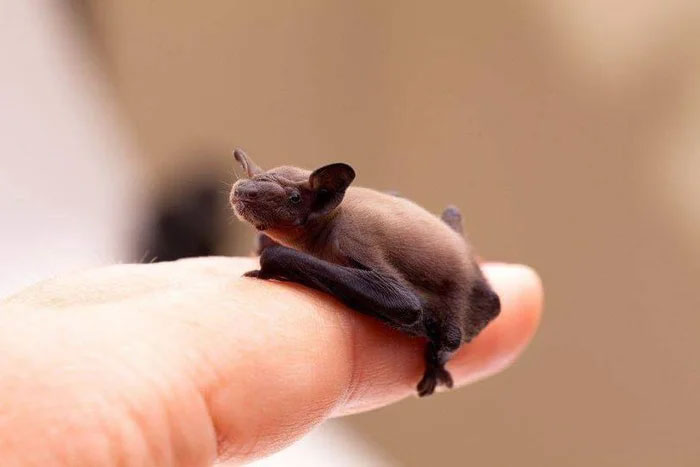Our world is home to over 1,200 species of bats, but the smallest of them can only be found in a few caves in Thailand and Myanmar.
The Bumblebee Bat – Kitti’s Hog-nosed Bat, also known as the Bumblebee Bat, is so small that it can comfortably rest on a person’s average-sized finger. Its size ranges from 29 to 33 mm, and it weighs only 2 grams. The wingspan of the Bumblebee Bat measures 170 mm.
Discovered in 1973 by Thai biologist Kitti Thonglongya, who officially named the species Bumblebee Bat. These bats have been identified in 44 limestone caves in Thailand, and they have also been found in five other caves in Myanmar.

Kitti’s Hog-nosed Bat (Craseonycteris thonglongyai) is the smallest mammal in the world and undoubtedly the smallest bat. Commonly referred to as the Bumblebee Bat, Kitti’s Hog-nosed Bat is about the size of a large bumblebee. It is also one of approximately 440 bat species found in Asia, a continent that hosts over one-third of the 1,200 bat species globally.
Unfortunately, all this human attention has had negative consequences for the smallest mammal in the world. As bat expert Pipat Soisook from Thailand notes, human presence in some caves has led to the loss of their habitat. Humans are destroying the environment of this small creature out of curiosity.

This tiny bat is legally protected in Thailand, and part of its habitat is safeguarded by parks. However, much more needs to be done to fully conserve the species. Conservationists have recommended improving the protection and management of the caves as well as broader protection of the foraging areas for this species.
For 12 years, the Bumblebee Bat was listed as Endangered in the IUCN Red List, but in 2008, it was reclassified as Vulnerable partly due to the discovery of new populations, including those across the border in Myanmar.
Surveys conducted from 1997 to 2008 estimated around 10,000 bats in 44 caves in western Thailand and five caves in Myanmar. However, the total population may be significantly higher, with researchers estimating the number of this species in Thailand to be around 45,000 individuals in a 2009 study published in the journal Endangered Species Research.

Kitti’s Hog-nosed Bat is the smallest bat and is considered the smallest mammal in the world. It has a coat that is reddish-brown or gray, with a distinctive pig-like snout. This bat forages during short periods in the evening and dawn, searching around forest areas for insects. Females typically give birth to only one offspring each year.
This tiny bat is known to live in small colonies of 10 to 100 individuals. They are nocturnal predators, using echolocation to hunt various insect species. These little bats only leave their roosts for about 30 minutes in the evening and 20 minutes at dawn.

Kitti’s Hog-nosed Bat is the only surviving species in the family Craseonycteridae, which is grouped under the superfamily Rhinolophoidea based on molecular testing. Based on this classification, their closest relatives are members of the families Hipposideridae and Rhinopomatidae. Currently, the biggest and most long-term threat to this bat species in Thailand is the annual deforestation by humans, which occurs most frequently during the bats’ breeding season.
Asia is not only home to the smallest bat but also to the largest bat species on our planet. Found in the Philippines, the Golden-capped Fruit Bat (Acerodon jubatus) is not only a large predator but also one of the most critically endangered bat species on the continent, currently classified as Endangered. Among the 442 bat species in Asia assessed by the IUCN Red List, 7 species are listed as Critically Endangered, 15 as Endangered, and 44 as Vulnerable. This means that 14% of bats on this continent are currently threatened. There are currently 71 bat species in Asia listed as Data Deficient – more than all the species listed as threatened. Data Deficient simply means that scientists do not know enough about these species to make an accurate assessment. |


















































